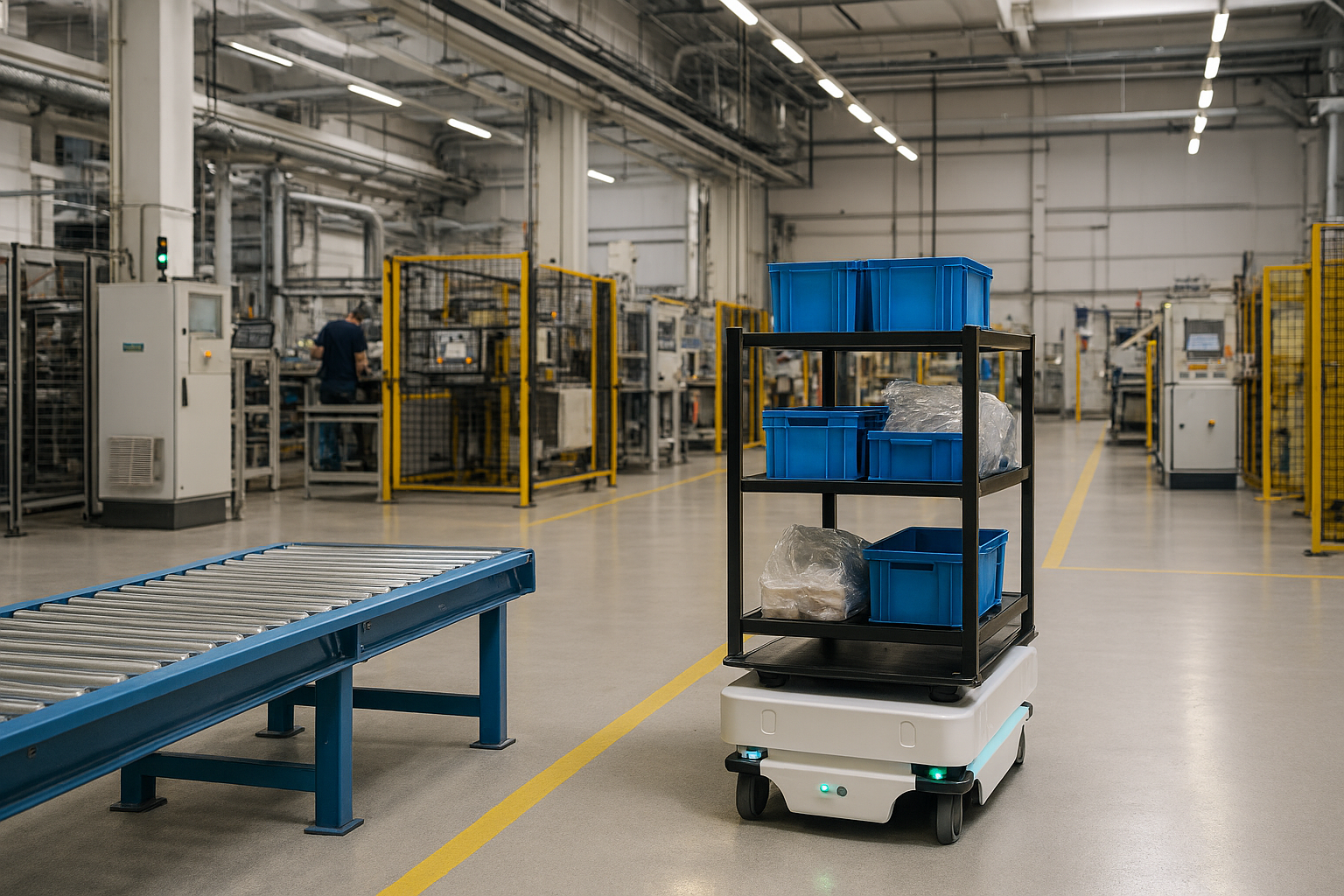SAP Logistics Management (SAP LGM): Rethinking cloud-native logistics
SAP Logistics Management is a modern cloud solution that combines transportation and warehouse management functions on the SAP Business Technology Platform (SAP BTP). It is aimed at growing companies, smaller warehouse and shipping locations as well as at locations of large corporations with simple to medium-complex requirements. Thanks to AI support, it offers a user-friendly, automated and scalable platform for quick and flexible deployment.
End-to-end integration
SAP LGM combines transport, warehouse, and network processes in one platform — for maximum transparency and efficiency.
Cloud-native architecture
Scalable, secure and flexible: SAP LGM is based on the SAP Business Technology Platform and uses cutting-edge cloud technologies.
Business Network Collaboration
Direct connection to the SAP Business Network enables efficient cooperation with partners and service providers.
Introduction
The demands placed on modern logistics are constantly growing: Global supply chains, volatile markets and increasing customer expectations call for flexible, integrated solutions. With SAP Logistics Management (SAP LGM), SAP provides a cloud-native platform that helps companies manage their logistics processes consistently, transparently and efficiently, closing a long-standing gap for small and medium-sized warehouse locations.
Challenge / initial situation: A look back
In recent years, many companies have tried to standardize their logistics processes through the global rollout of SAP Extended Warehouse Management (SAP EWM) and SAP Transportation Management (SAP TM). While these solutions shine in large, complex distribution centers with dedicated resources, they were often too heavyweight for smaller or regional warehouses: Long implementation times, complex configurations and high training costs meant that the ROI for small sites was missing. As a result, they either stuck with SAP Inventory Management (SAP IM) or relied on third-party solutions — with all the disadvantages of fragmented architectures and limited transparency.
Solution approach / Technology: A new chapter with SAP Logistics Management (SAP LGM)
With the official introduction of SAP Logistics Management (SAP LGM) on October 7, 2025 at SAP Connect in Las Vegas, SAP is opening a new chapter: SAP LGM is specifically designed for small to medium-sized warehouses of moderate complexity and enables agile, rapid implementations. The target group is large companies with SAP S/4HANA that operate a network of regional or satellite warehouses — while large distribution centers continue to rely on SAP EWM and SAP TM.
highlights
- Cloud-native architecture on SAP BTP
- Integrate with SAP S/4HANA Cloud Private Edition
- Using the SAP Integration Suite for flexible connectivity
- Security by Design: MFA, role-based permissions, secure destinations
- AI-powered processes and continuous innovation
- Scalable and future-proof

Comparison: SAP LGM vs. SAP EWM/SAP TM
Explanatory note:
- SAP LGM is ideal for small to medium-sized, more standardized warehouse locations with manageable volumes and simple processes. The focus here is on rapid, agile implementation and the reduction of complexity.
- SAP EWM and SAP TM are the right choice for large, complex logistics centers with high throughput, diverse product types and sophisticated processes — including automation, quality management and integration into other systems.
Benefits/Using SAP Logistics Management (SAP LGM)
- End-to-end visibility: Real-time insights into all logistical processes — from incoming goods to delivery.
- Process optimization: Reduced system breakages, fewer manual interfaces, automated workflows.
- Scalability & flexibility: Cloud architecture enables rapid onboarding of new locations and partners.
- Compliance & security: Integrated security mechanisms and role-based access control.
- Business Network Collaboration: Efficient collaboration with carriers, suppliers and customers.
- Quick implementation: Rollout in weeks instead of months — ideal for agile, decentralized logistics.
conclusion
SAP Logistics Management (SAP LGM) is the answer to the challenges of modern supply chains. The platform combines integration, transparency and flexibility and enables companies to make their logistics processes future-proof and efficient — especially for small and medium-sized locations. SAP LGM complements the SAP portfolio and bridges the gap between simple SAP IM scenarios and complex SAP EWM/SAP TM solutions.
If you would like to learn more about SAP LGM, simply contact us.
FAQs
Do you have any questions? We have compiled the most important answers for you in the following FAQs. If your question is not listed, please feel free to contact us directly.
Basic SAP EWM/SAP TM provide basic logistics functions in SAP S/4HANA. SAP LGM is cloud-native, modular, AI-powered and enables faster deployments, lower operating costs, and greater agility — ideal for smaller, distributed locations
Yes SAP LGM is designed for seamless integration with SAP EWM, SAP TM, and SAP Business Network. This allows hybrid architectures to be created that optimally balance costs, complexity and reach.
SAP LGM is aimed at large companies with SAP S/4HANA that, in addition to large distribution centers, also operate smaller, resource-limited warehouses. Ideal when the complexity of SAP EWM/SAP TM is not required, but integration and transparency are important.
SAP LGM is fully integrated into the SAP ecosystem, offers continuous transparency and reduces integration costs and system breaks compared to external WMS/TMS solutions.
SAP LGM is AI-supported from the start. AI features support automation, forecasting, and continuous process improvement.
Companies can combine SAP LGM for smaller locations and SAP EWM/SAP TM for large warehouses — with continuous integration and centralized management.
SAP LGM supports standard processes such as parcel/LTL/FTL planning, tendering and awarding (single-mode) as well as basic warehouse processes. SAP EWM and SAP TM are required for multi-mode routing, strategic freight planning, quality management, or integration with MES and e-commerce.
SAP LGM is designed for smaller, standardized locations with manageable volumes and simple processes. SAP EWM/SAP TM are designed for large, complex logistics centers with high throughput, diverse product types and demanding processes (including automation, quality management, integration into other systems).






